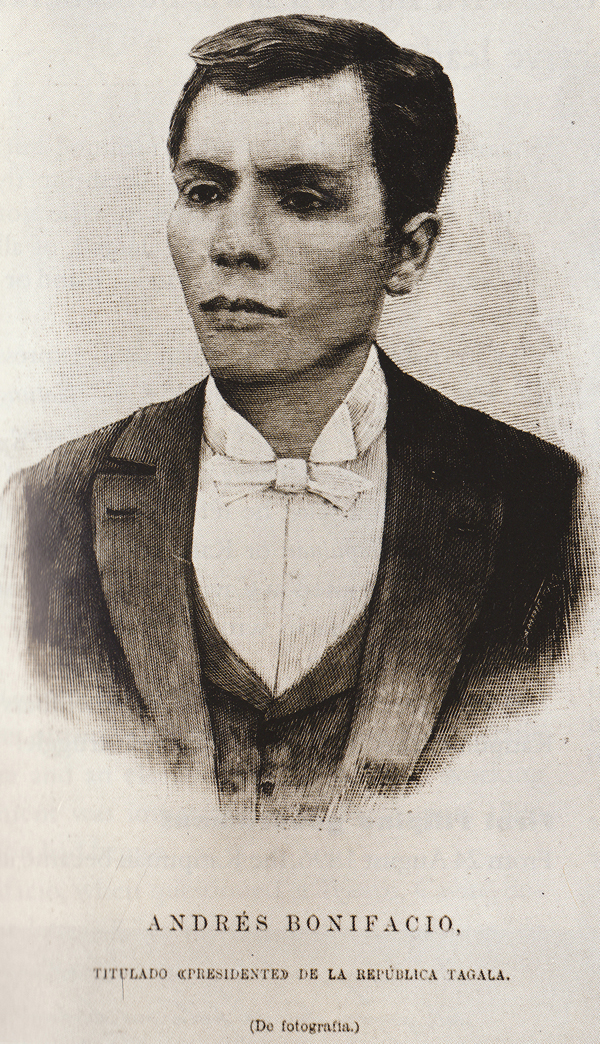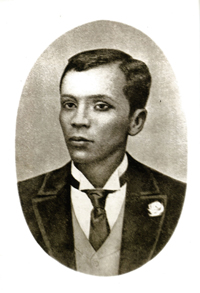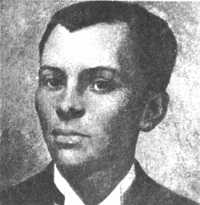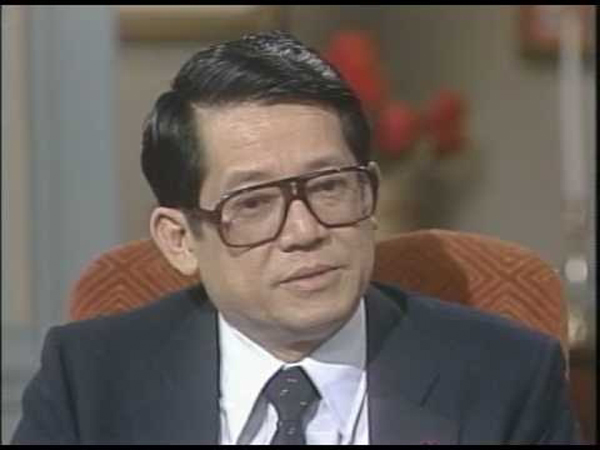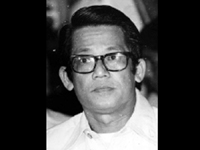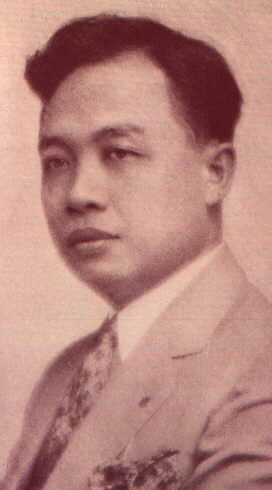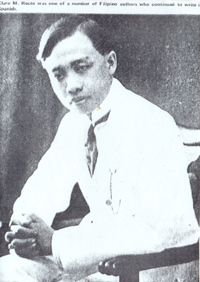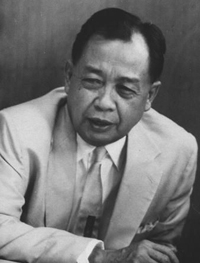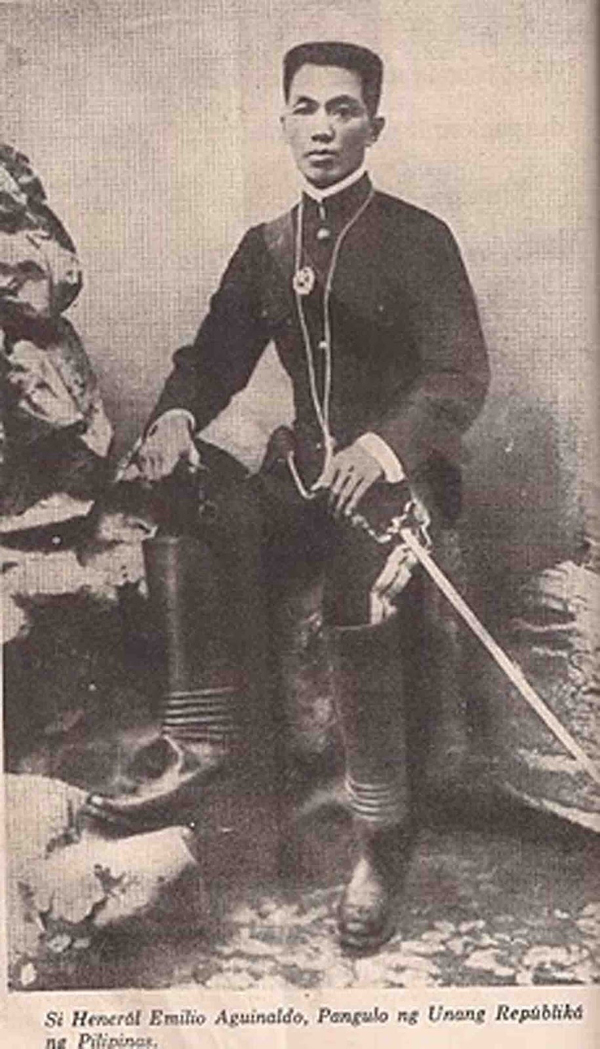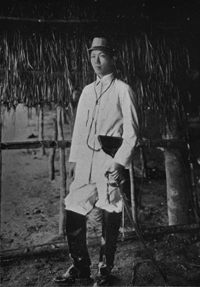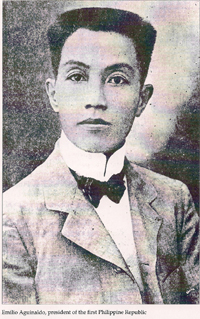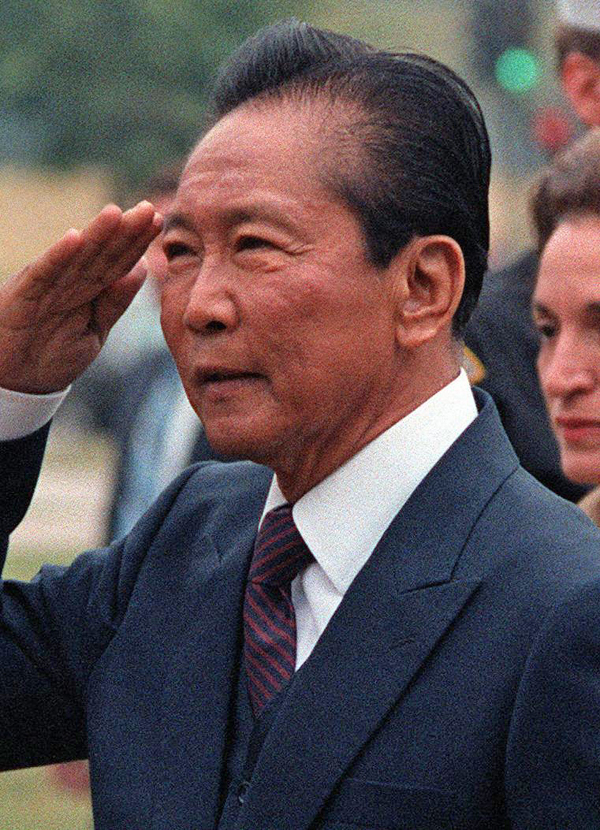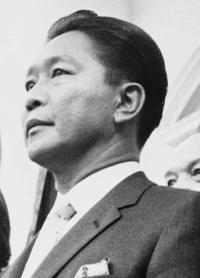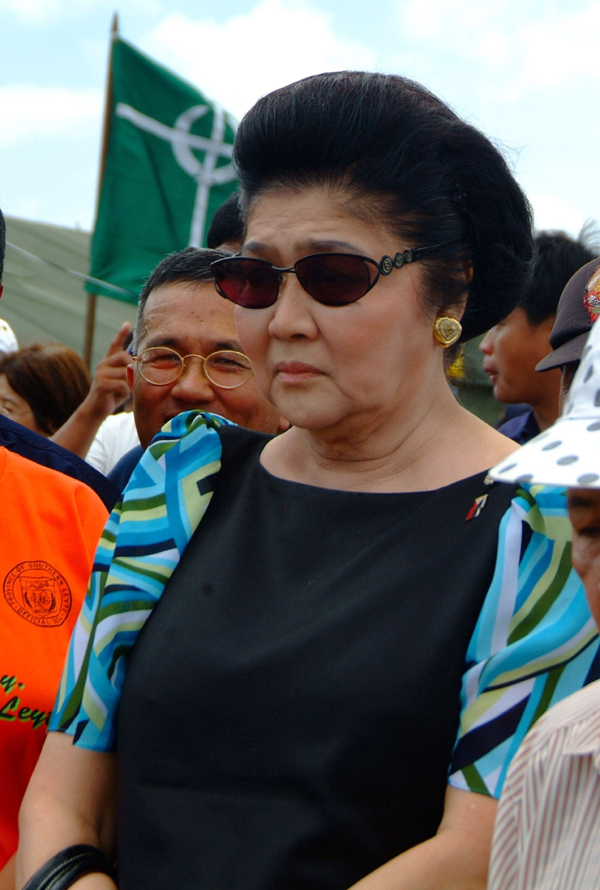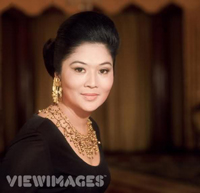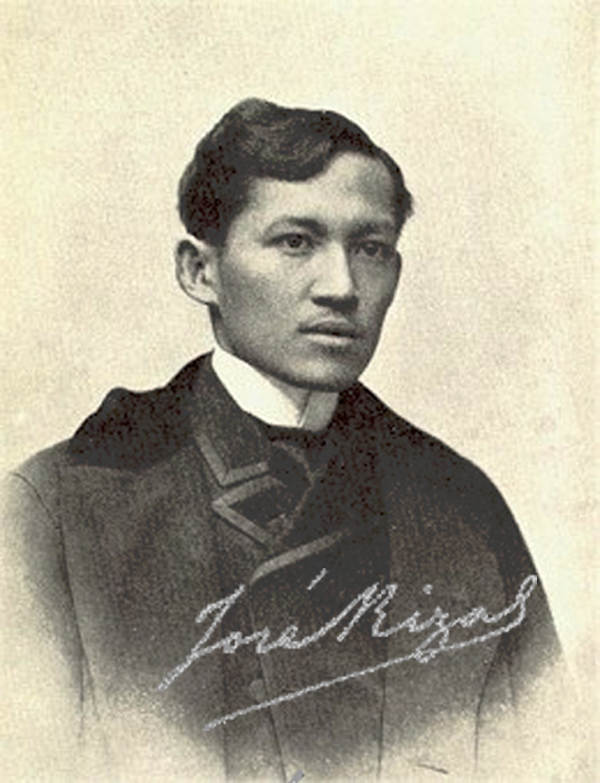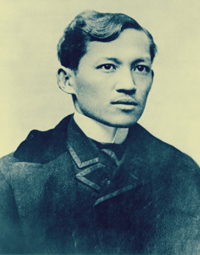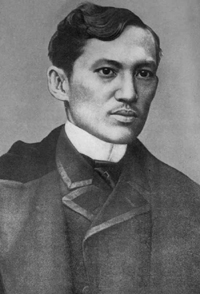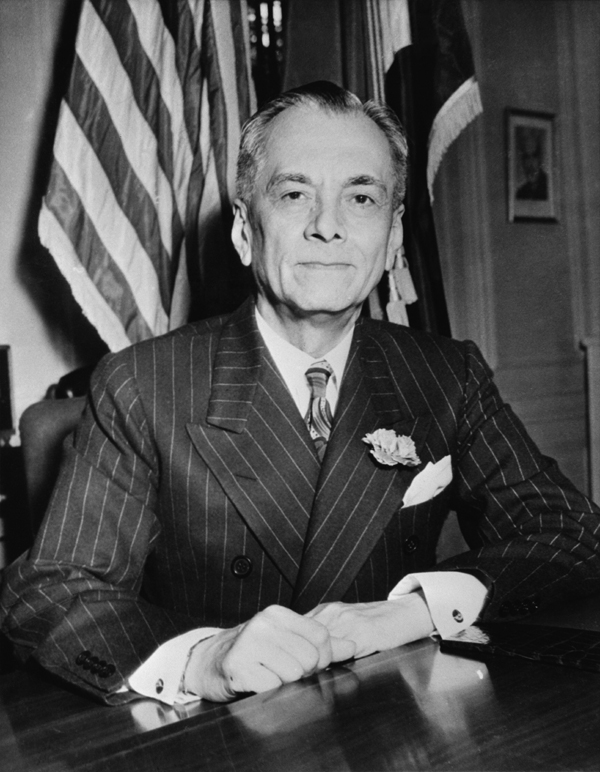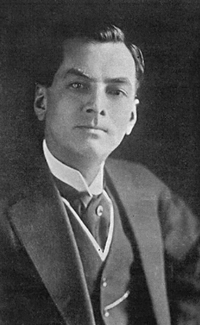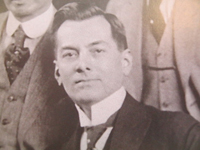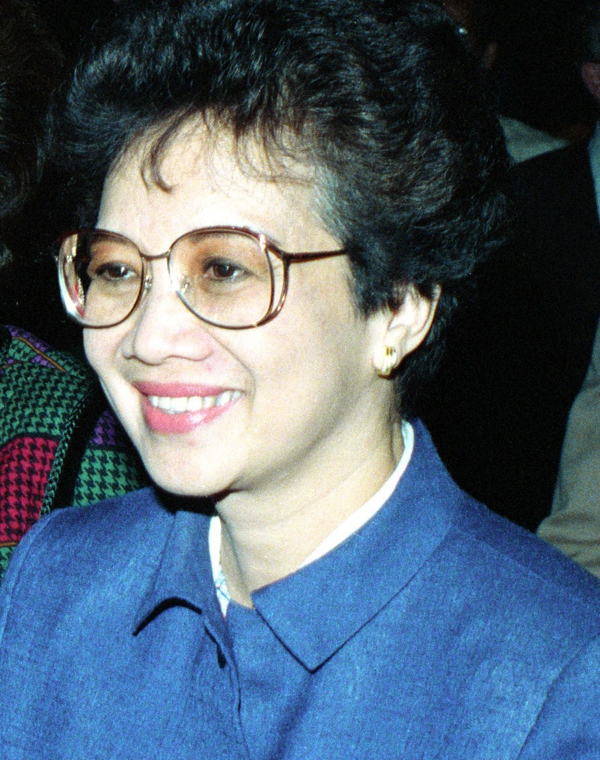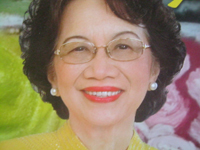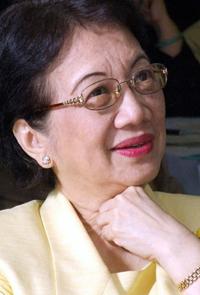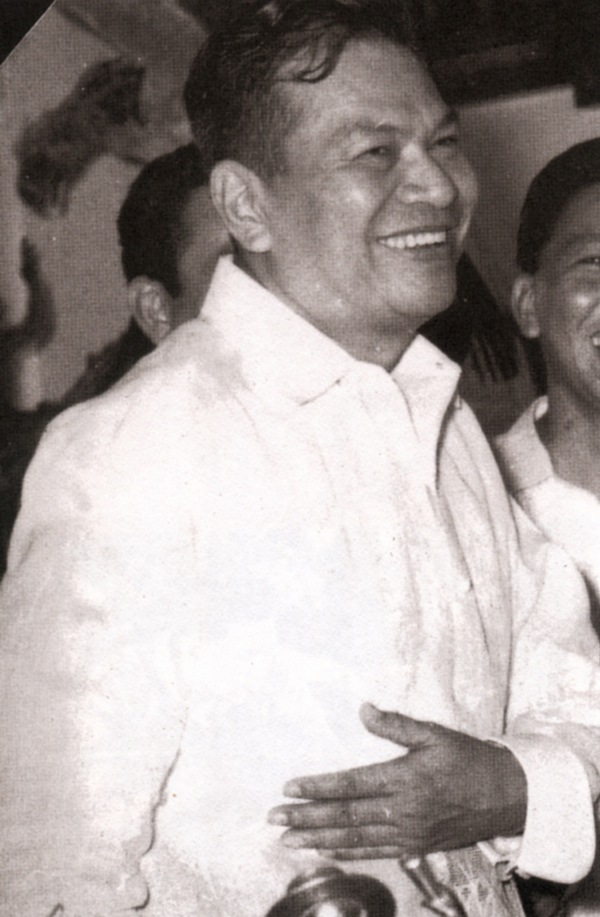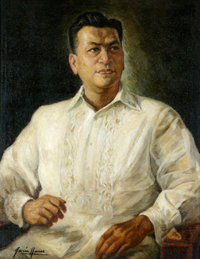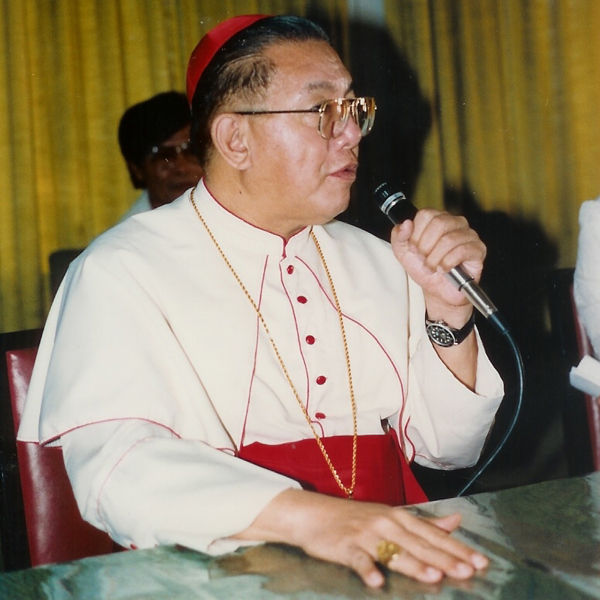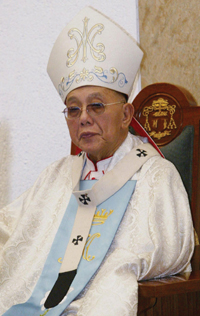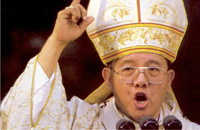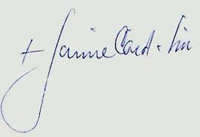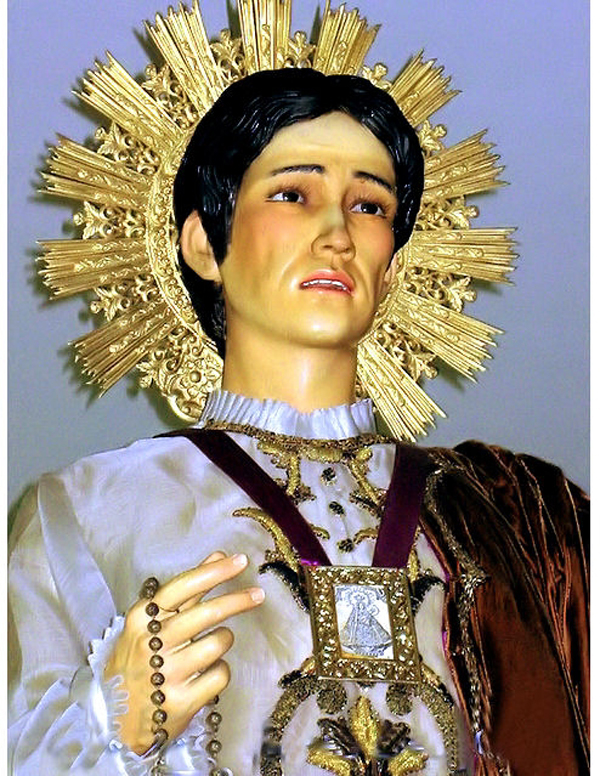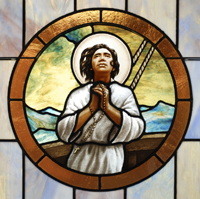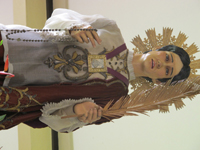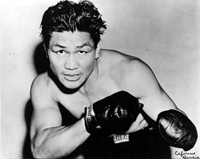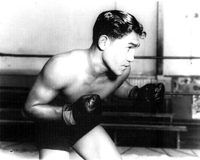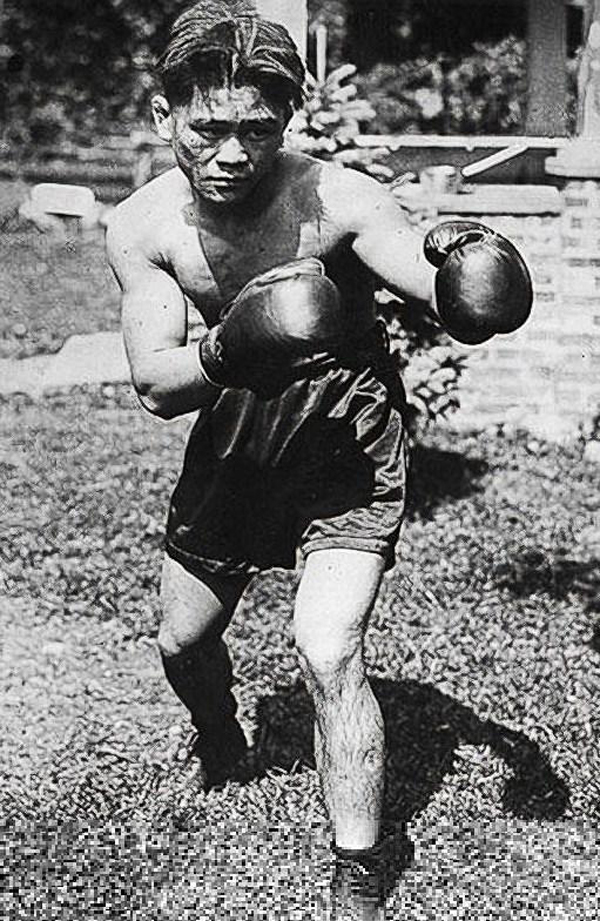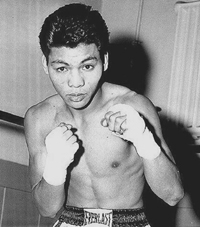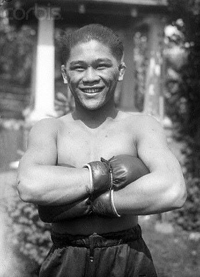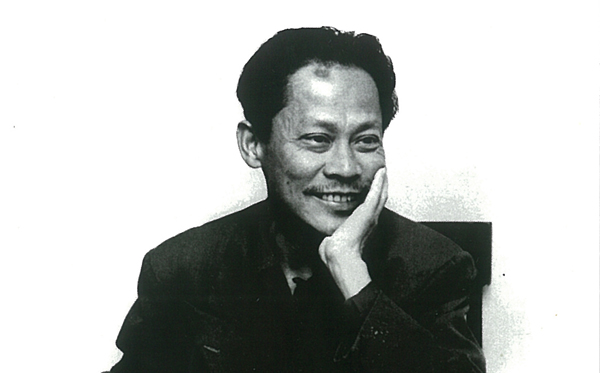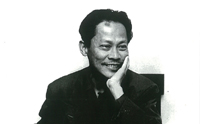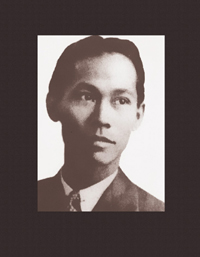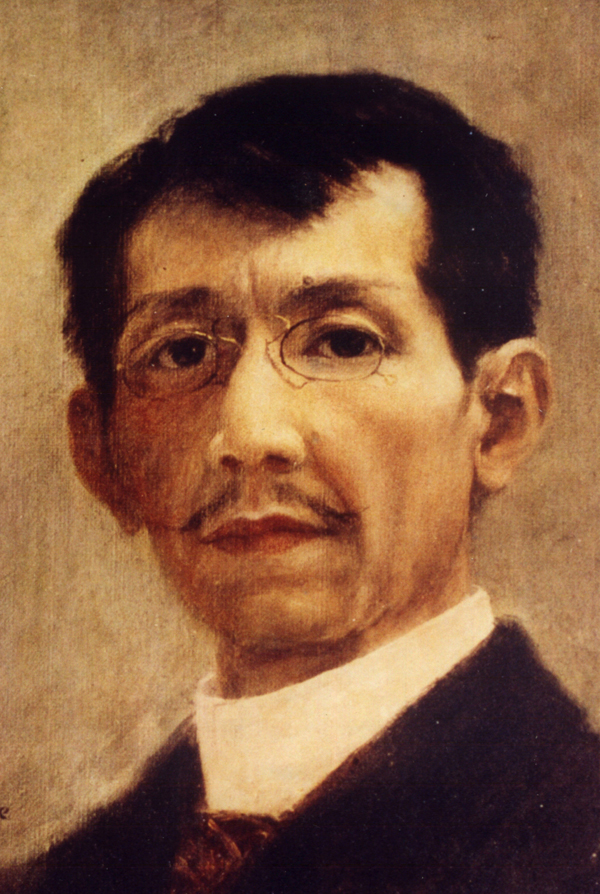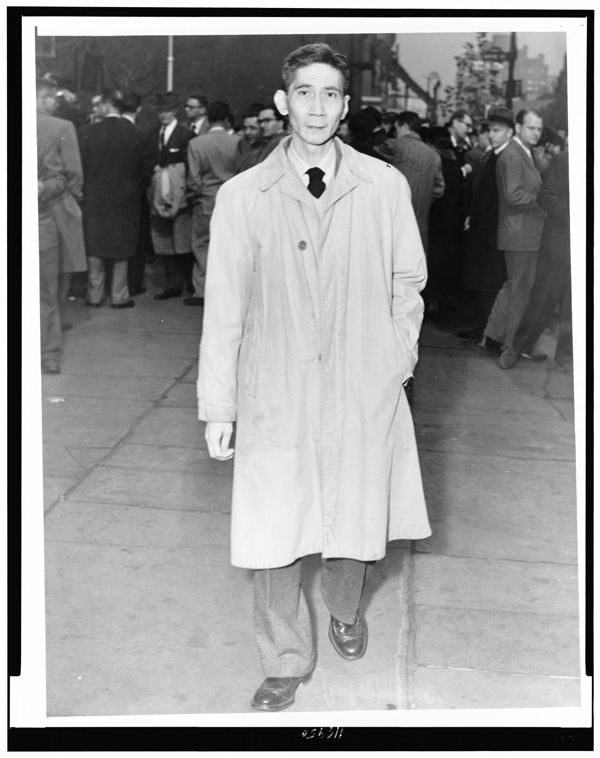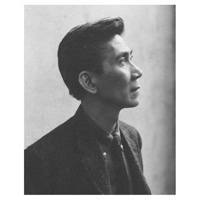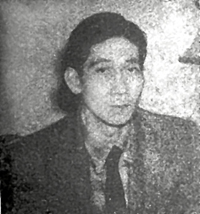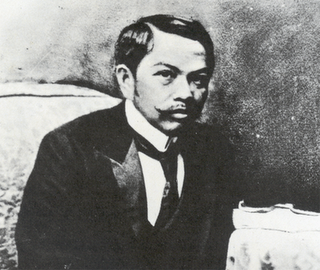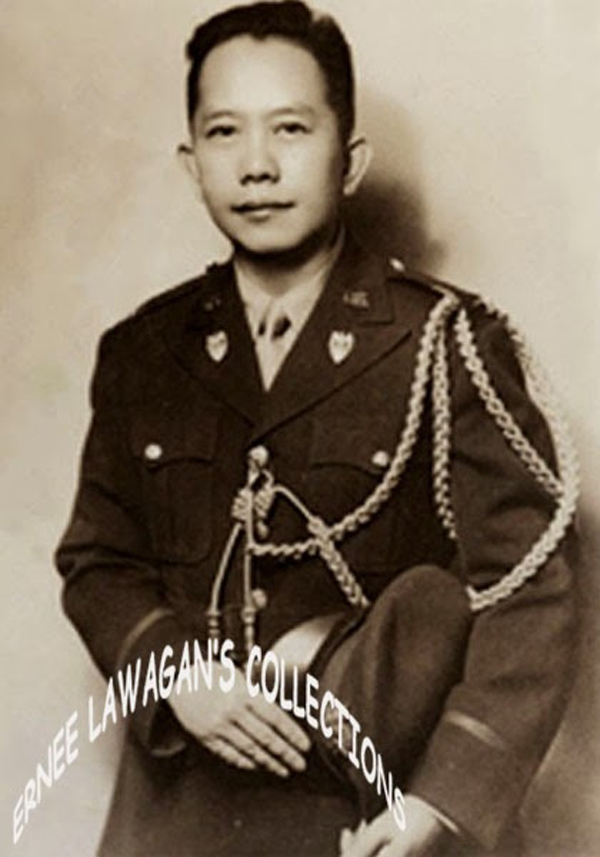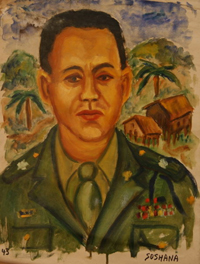History
Activists and Revolutionaries
Andrés Bonifacio y de Castro
Field of Interest: Revolutionary Leader
Known For: President of the Philippines (Unofficial) (August 24, 1896 – March 22 or May 10, 1897)Filipinos have made their most important marks in the political arena. Foremost are José Rizal (1861–96), a distinguished novelist, poet, physician, linguist, statesman, and national hero; Andrés Bonifacio (1863–97), the leader of the secret Katipunan movement against Spain; and Emilio Aguinaldo y Famy (1869–1964), the commander of the revolutionary forces and president of the revolutionary First Philippine Republic (1899).Andrés Bonifacio y de Castro was a Filipino nationalist and revolutionary leader. He is often called "the Father of the Philippine Revolution". He was a founder and later Supremo ("supreme leader") of the Kataas-taasan, Kagalang-galangang Katipunan ng mga Anak ng Bayan or simply and more popularly called Katipunan, a movement which sought the independence of the Philippines from Spanish colonial rule and started the Philippine Revolution. He is considered a de facto national hero of the Philippines, and is also considered by some Filipino historians to be the first President of the Philippines (through the revolutionary government he established), but officially he is not recognized as such.
Country: Philippines
Date of Birth: 30 November 1863
Place of Birth: Tondo, Manila, Captaincy General of the Philippines
Date of Death: 10 May 1897
Please of Death: Maragondon, Cavite, Captaincy General of the Philippines
Spouse: Monica (c. 1880–1890, her death) Gregoria de Jesús (1893–1897, his death)
Known For: President of the Philippines (Unofficial) (August 24, 1896 – March 22 or May 10, 1897)Filipinos have made their most important marks in the political arena. Foremost are José Rizal (1861–96), a distinguished novelist, poet, physician, linguist, statesman, and national hero; Andrés Bonifacio (1863–97), the leader of the secret Katipunan movement against Spain; and Emilio Aguinaldo y Famy (1869–1964), the commander of the revolutionary forces and president of the revolutionary First Philippine Republic (1899).Andrés Bonifacio y de Castro was a Filipino nationalist and revolutionary leader. He is often called "the Father of the Philippine Revolution". He was a founder and later Supremo ("supreme leader") of the Kataas-taasan, Kagalang-galangang Katipunan ng mga Anak ng Bayan or simply and more popularly called Katipunan, a movement which sought the independence of the Philippines from Spanish colonial rule and started the Philippine Revolution. He is considered a de facto national hero of the Philippines, and is also considered by some Filipino historians to be the first President of the Philippines (through the revolutionary government he established), but officially he is not recognized as such.
Country: Philippines
Date of Birth: 30 November 1863
Place of Birth: Tondo, Manila, Captaincy General of the Philippines
Date of Death: 10 May 1897
Please of Death: Maragondon, Cavite, Captaincy General of the Philippines
Spouse: Monica (c. 1880–1890, her death) Gregoria de Jesús (1893–1897, his death)
Political Leaders
Benigno Simeon Aquino, Jr.
Field of Interest: Political Leader
Known For: Senator of the Philippines (December 30, 1967 – September 23, 1972), Presidential Adviser on Defense Affairs (1949–1954), Governor of Tarlac (February 17, 1961 – December 30, 1967), Vice Governor of Tarlac (December 30, 1959 – December 30, 1961)Leading critics of the Marcos government during the late 1970s and early 1980s were Benigno S. Aquino, Jr. (1933–83) and Jaime Sin (b.1928), who became the archbishop of Manila in 1974 and a cardinal in 1976.Benigno Simeon "Ninoy" Aquino, Jr. was a Filipino Senator (1967–1972) and a former Governor of Tarlac. Aquino, together with Gerry Roxas and Jovito Salonga, formed the leadership of the opposition to the government of President Ferdinand Marcos. Shortly after the imposition of martial law, he was arrested in 1972 along with other dissidents and incarcerated for seven years. In 1980 Aquino was permitted to travel to the United States for medical treatment following a heart attack. He was assassinated at the Manila International Airport in 1983 upon returning from his self-imposed exile. His death catapulted his widow, Corazon Aquino, into the political limelight, and prompted her to run for president as member of the UNIDO party in the 1986 snap elections. Among other public structures, Manila International Airport has since been renamed Ninoy Aquino International Airport in his honour, and the anniversary of his death is a national holiday.
Country: Philippines
Date of Birth: 27 November 1932
Place of Birth: Concepcion, Tarlac, Philippines
Date of Death: 21 August 1983
Please of Death: Manila International Airport, Parañaque, Metro Manila, Philippines
Spouse: Corazon C. Aquino
Known For: Senator of the Philippines (December 30, 1967 – September 23, 1972), Presidential Adviser on Defense Affairs (1949–1954), Governor of Tarlac (February 17, 1961 – December 30, 1967), Vice Governor of Tarlac (December 30, 1959 – December 30, 1961)Leading critics of the Marcos government during the late 1970s and early 1980s were Benigno S. Aquino, Jr. (1933–83) and Jaime Sin (b.1928), who became the archbishop of Manila in 1974 and a cardinal in 1976.Benigno Simeon "Ninoy" Aquino, Jr. was a Filipino Senator (1967–1972) and a former Governor of Tarlac. Aquino, together with Gerry Roxas and Jovito Salonga, formed the leadership of the opposition to the government of President Ferdinand Marcos. Shortly after the imposition of martial law, he was arrested in 1972 along with other dissidents and incarcerated for seven years. In 1980 Aquino was permitted to travel to the United States for medical treatment following a heart attack. He was assassinated at the Manila International Airport in 1983 upon returning from his self-imposed exile. His death catapulted his widow, Corazon Aquino, into the political limelight, and prompted her to run for president as member of the UNIDO party in the 1986 snap elections. Among other public structures, Manila International Airport has since been renamed Ninoy Aquino International Airport in his honour, and the anniversary of his death is a national holiday.
Country: Philippines
Date of Birth: 27 November 1932
Place of Birth: Concepcion, Tarlac, Philippines
Date of Death: 21 August 1983
Please of Death: Manila International Airport, Parañaque, Metro Manila, Philippines
Spouse: Corazon C. Aquino
Claro Mayo Recto, Jr.
Field of Interest: Political Leader
Known For: Minority leader of the Senate of the Philippines (1931–1934), Senator of the Philippines (December 30, 1955 – October 2, 1960) (July 9, 1945 – May 25, 1946)Contemporary writers who have won recognition include Claro M. Recto (1890–1960), José García Villa (1914–97), and Carlos Bulosan (1914–56).Claro Mayo Recto, Jr. was a Filipino politician, jurist, poet and one of the foremost statesmen of his generation. He is remembered for his nationalism, for "the impact of his patriotic convictions on modern political thought".
Country: Philippines
Date of Birth: 8 February 1890
Place of Birth: Tiaong, Tayabas, Spanish East Indies (now Tiaong, Quezon, Philippines)
Date of Death: 2 October 1960
Please of Death: Rome, Italian Republic
Spouse: Angeles Silos, Aurora Reyes
Known For: Minority leader of the Senate of the Philippines (1931–1934), Senator of the Philippines (December 30, 1955 – October 2, 1960) (July 9, 1945 – May 25, 1946)Contemporary writers who have won recognition include Claro M. Recto (1890–1960), José García Villa (1914–97), and Carlos Bulosan (1914–56).Claro Mayo Recto, Jr. was a Filipino politician, jurist, poet and one of the foremost statesmen of his generation. He is remembered for his nationalism, for "the impact of his patriotic convictions on modern political thought".
Country: Philippines
Date of Birth: 8 February 1890
Place of Birth: Tiaong, Tayabas, Spanish East Indies (now Tiaong, Quezon, Philippines)
Date of Death: 2 October 1960
Please of Death: Rome, Italian Republic
Spouse: Angeles Silos, Aurora Reyes
Emilio Famy Aguinaldo
Field of Interest: Political Leader
Known For: 1st President of the Philippines (January 23, 1899 – April 1, 1901)Filipinos have made their most important marks in the political arena. Foremost are José Rizal (1861–96), a distinguished novelist, poet, physician, linguist, statesman, and national hero; Andrés Bonifacio (1863–97), the leader of the secret Katipunan movement against Spain; and Emilio Aguinaldo y Famy (1869–1964), the commander of the revolutionary forces and president of the revolutionary First Philippine Republic (1899).Emilio Famy Aguinaldo QSC PLH is officially recognized as the First President of the Philippines (1899–1901) and led Philippine forces first against Spain in the latter part of the Philippine Revolution (1896–1897), and then in the Spanish–American War (1898), and finally against the United States during the Philippine–American War (1899–1901). He was captured by American forces in 1901, which brought an end to his presidency. In 1935 Aguinaldo ran unsuccessfully for president of the Philippine Commonwealth against Manuel Quezon. After the Japanese invasion of the Philippines in 1941, he cooperated with the new rulers, even making a radio appeal for the surrender of the American and Filipino forces on Bataan. He was arrested as a collaborator after the Americans returned but was later freed in a general amnesty.
Country: Philippines
Date of Birth: 22 March 1869
Place of Birth: Cavite El Viejo, Spanish East Indies
Date of Death: 6 February 1964
Please of Death: Quezon City, Philippines
Spouse: Hilaria del Rosario (1896–1921) María Agoncillo (1930–1963)
Known For: 1st President of the Philippines (January 23, 1899 – April 1, 1901)Filipinos have made their most important marks in the political arena. Foremost are José Rizal (1861–96), a distinguished novelist, poet, physician, linguist, statesman, and national hero; Andrés Bonifacio (1863–97), the leader of the secret Katipunan movement against Spain; and Emilio Aguinaldo y Famy (1869–1964), the commander of the revolutionary forces and president of the revolutionary First Philippine Republic (1899).Emilio Famy Aguinaldo QSC PLH is officially recognized as the First President of the Philippines (1899–1901) and led Philippine forces first against Spain in the latter part of the Philippine Revolution (1896–1897), and then in the Spanish–American War (1898), and finally against the United States during the Philippine–American War (1899–1901). He was captured by American forces in 1901, which brought an end to his presidency. In 1935 Aguinaldo ran unsuccessfully for president of the Philippine Commonwealth against Manuel Quezon. After the Japanese invasion of the Philippines in 1941, he cooperated with the new rulers, even making a radio appeal for the surrender of the American and Filipino forces on Bataan. He was arrested as a collaborator after the Americans returned but was later freed in a general amnesty.
Country: Philippines
Date of Birth: 22 March 1869
Place of Birth: Cavite El Viejo, Spanish East Indies
Date of Death: 6 February 1964
Please of Death: Quezon City, Philippines
Spouse: Hilaria del Rosario (1896–1921) María Agoncillo (1930–1963)
Ferdinand Emmanuel Edralin Marcos
Field of Interest: Political Leader
Known For: 10th President of the Philippines (December 30, 1965 – February 25, 1986), 3rd Prime Minister of the Philippines (June 12, 1978 – June 30, 1981), Secretary of National Defense (August 28, 1971 – January 3, 1972) (December 31, 1965 – January 20, 1967), 11th President of the Senate of the Philippines (April 5, 1963 – December 30, 1965), Senator of the Philippines (December 30, 1959 – December 30, 1965)Ferdinand Edralin Marcos (1917–89), who won distinction as a guerrilla fighter during the Japanese occupation, was the dominant political figure in the Philippines from his first election to the presidency in November 1965 to his ouster in February 1986. His wife, Imelda Romualdez Marcos (b.1930), emerged as a powerful force within her husband's government during the 1970s.Ferdinand Emmanuel Edralin Marcos was a Filipino lawyer and politician who served as President of the Philippines from 1965 to 1986. He ruled under martial law from 1972 until 1981 and his regime as dictator was known for corruption, extravagance, and brutality. Public outrage led to the snap elections of 1986 and to the People Power Revolution in February 1986, which removed him from power. Prior to the presidency, he served as a member of the Philippine House of Representatives from 1949 to 1959 and of the Philippine Senate from 1959 to 1965, where he was Senate President from 1963 to 1965. His wife was Imelda Marcos whose excesses during their kleptocracy made her infamous in her own right, spawning the term "Imeldific". She is still active in Philippine politics along with two of his three children, Imee Marcos and Ferdinand "Bongbong" Marcos, Jr.
Country: Philippines
Date of Birth: 11 September 1917
Place of Birth: Sarrat, Ilocos Norte, Philippines
Date of Death: 28 September 1989
Please of Death: Honolulu, Hawaii, U.S.A.
Spouse: Imelda Romuáldez (1954–1989; his death)
Known For: 10th President of the Philippines (December 30, 1965 – February 25, 1986), 3rd Prime Minister of the Philippines (June 12, 1978 – June 30, 1981), Secretary of National Defense (August 28, 1971 – January 3, 1972) (December 31, 1965 – January 20, 1967), 11th President of the Senate of the Philippines (April 5, 1963 – December 30, 1965), Senator of the Philippines (December 30, 1959 – December 30, 1965)Ferdinand Edralin Marcos (1917–89), who won distinction as a guerrilla fighter during the Japanese occupation, was the dominant political figure in the Philippines from his first election to the presidency in November 1965 to his ouster in February 1986. His wife, Imelda Romualdez Marcos (b.1930), emerged as a powerful force within her husband's government during the 1970s.Ferdinand Emmanuel Edralin Marcos was a Filipino lawyer and politician who served as President of the Philippines from 1965 to 1986. He ruled under martial law from 1972 until 1981 and his regime as dictator was known for corruption, extravagance, and brutality. Public outrage led to the snap elections of 1986 and to the People Power Revolution in February 1986, which removed him from power. Prior to the presidency, he served as a member of the Philippine House of Representatives from 1949 to 1959 and of the Philippine Senate from 1959 to 1965, where he was Senate President from 1963 to 1965. His wife was Imelda Marcos whose excesses during their kleptocracy made her infamous in her own right, spawning the term "Imeldific". She is still active in Philippine politics along with two of his three children, Imee Marcos and Ferdinand "Bongbong" Marcos, Jr.
Country: Philippines
Date of Birth: 11 September 1917
Place of Birth: Sarrat, Ilocos Norte, Philippines
Date of Death: 28 September 1989
Please of Death: Honolulu, Hawaii, U.S.A.
Spouse: Imelda Romuáldez (1954–1989; his death)
Imelda Remedios Visitación Trinidad Romuáldez
Field of Interest: Political Leader
Known For: First Lady of the Philippines (December 30, 1965 – February 25, 1986), Member of the Philippine House of Representatives from Ilocos Norte's Second District (June 30, 2010 – present), Member of the Philippine House of Representatives from Leyte's First District (June 30, 1995 – June 30, 1998)Ferdinand Edralin Marcos (1917–89), who won distinction as a guerrilla fighter during the Japanese occupation, was the dominant political figure in the Philippines from his first election to the presidency in November 1965 to his ouster in February 1986. His wife, Imelda Romualdez Marcos (b.1930), emerged as a powerful force within her husband's government during the 1970s.Imelda Marcos is the widow of former Philippine President Ferdinand Marcos best known for her collection of some three thousand pairs of shoes. She served as First Lady from 1965 to 1986. Born in Manila, Imelda spent her childhood in Tacloban during the decades surrounding World War II. She returned to Manila to begin her career as a singer and model before meeting her husband. In 1954, she married Ferdinand Marcos who was elected President in 1965. He declared Martial law in 1972 that lasted until 1981. In 1983, the Marcos government was accused of being involved in the assassination of Benigno Aquino, Jr.. This led to elections in 1986, after which Aquino's widow, Corazon, accused the Marcos family of manipulating the results in their favor. The people protested and forced the Marcos couple out of office and into exile. After the death of her husband, Imelda and her family were granted permission to return to the Philippines. She was elected to the House of Representatives for Leyte in 1995 and for Ilocos Norte in 2010 and 2013. Despite facing numerous allegations regarding the family's source of wealth, she was not imprisoned on these charges. She continued to wield power, and her ability to survive upheavals in her life has led her to be called the "Steel Butterfly".
Country: Philippines
Date of Birth: 2 July 1929
Place of Birth: Manila, Philippines
Spouse: Ferdinand Marcos (1954–1989; his death)
Known For: First Lady of the Philippines (December 30, 1965 – February 25, 1986), Member of the Philippine House of Representatives from Ilocos Norte's Second District (June 30, 2010 – present), Member of the Philippine House of Representatives from Leyte's First District (June 30, 1995 – June 30, 1998)Ferdinand Edralin Marcos (1917–89), who won distinction as a guerrilla fighter during the Japanese occupation, was the dominant political figure in the Philippines from his first election to the presidency in November 1965 to his ouster in February 1986. His wife, Imelda Romualdez Marcos (b.1930), emerged as a powerful force within her husband's government during the 1970s.Imelda Marcos is the widow of former Philippine President Ferdinand Marcos best known for her collection of some three thousand pairs of shoes. She served as First Lady from 1965 to 1986. Born in Manila, Imelda spent her childhood in Tacloban during the decades surrounding World War II. She returned to Manila to begin her career as a singer and model before meeting her husband. In 1954, she married Ferdinand Marcos who was elected President in 1965. He declared Martial law in 1972 that lasted until 1981. In 1983, the Marcos government was accused of being involved in the assassination of Benigno Aquino, Jr.. This led to elections in 1986, after which Aquino's widow, Corazon, accused the Marcos family of manipulating the results in their favor. The people protested and forced the Marcos couple out of office and into exile. After the death of her husband, Imelda and her family were granted permission to return to the Philippines. She was elected to the House of Representatives for Leyte in 1995 and for Ilocos Norte in 2010 and 2013. Despite facing numerous allegations regarding the family's source of wealth, she was not imprisoned on these charges. She continued to wield power, and her ability to survive upheavals in her life has led her to be called the "Steel Butterfly".
Country: Philippines
Date of Birth: 2 July 1929
Place of Birth: Manila, Philippines
Spouse: Ferdinand Marcos (1954–1989; his death)
José Protasio Rizal Mercado y Alonso Realonda
Field of Interest: Nationalist, Author
Known For: Noli Me Tángere (novel), El Filibusterismo (novel)Filipinos have made their most important marks in the political arena. Foremost are José Rizal (1861–96), a distinguished novelist, poet, physician, linguist, statesman, and national hero; Andrés Bonifacio (1863–97), the leader of the secret Katipunan movement against Spain; and Emilio Aguinaldo y Famy (1869–1964), the commander of the revolutionary forces and president of the revolutionary First Philippine Republic (1899).José Protasio Rizal Mercado y Alonso Realonda was a Filipino nationalist, novelist, poet, ophthalmologist, journalist, and revolutionary. He is widely considered one of the greatest heroes of the Philippines. He was the author of Noli Me Tángere, El Filibusterismo, and a number of poems and essays. He was executed on December 30, 1896, by a squad of Filipino soldiers of the Spanish Army.
Country: Philippines
Date of Birth: 19 June 1861
Place of Birth: Calamba City, Laguna
Date of Death: 30 December 1896
Please of Death: Bagumbayan, Manila
Spouse: Josephine Bracken
Known For: Noli Me Tángere (novel), El Filibusterismo (novel)Filipinos have made their most important marks in the political arena. Foremost are José Rizal (1861–96), a distinguished novelist, poet, physician, linguist, statesman, and national hero; Andrés Bonifacio (1863–97), the leader of the secret Katipunan movement against Spain; and Emilio Aguinaldo y Famy (1869–1964), the commander of the revolutionary forces and president of the revolutionary First Philippine Republic (1899).José Protasio Rizal Mercado y Alonso Realonda was a Filipino nationalist, novelist, poet, ophthalmologist, journalist, and revolutionary. He is widely considered one of the greatest heroes of the Philippines. He was the author of Noli Me Tángere, El Filibusterismo, and a number of poems and essays. He was executed on December 30, 1896, by a squad of Filipino soldiers of the Spanish Army.
Country: Philippines
Date of Birth: 19 June 1861
Place of Birth: Calamba City, Laguna
Date of Death: 30 December 1896
Please of Death: Bagumbayan, Manila
Spouse: Josephine Bracken
Manuel Luis Quezon y Molina
Field of Interest: Political Leader
Known For: 2nd President of the Philippines (November 15, 1935 – August 1, 1944)Notable Filipinos of this century include Manuel Luis Quezon y Molina (1878–1944), the first Commonwealth president; Ramón Magsaysay (1907–57), a distinguished leader in the struggle with the Hukbalahaps; and Carlos Peña Rómulo (1899–1985), a Pulitzer Prize-winning author and diplomat and the president of the fourth UN General Assembly.Manuel Luis Quezon y Molina served as president of the Commonwealth of the Philippines from 1935 to 1944. He was the first Filipino to head a government of the Philippines (as opposed to other historical states), and is considered to have been the second president of the Philippines, after Emilio Aguinaldo (1897–1901). Quezon was the first Senate president elected to the presidency, the first president elected through a national election and the first incumbent to secure re-election (for a partial second term, later extended, due to amendments to the 1935 Constitution). He is known as the "Father of the National Language". During his presidency, Quezón tackled the problem of landless peasants in the countryside. Other major decisions include reorganization of the islands' military defense, approval of recommendation for government reorganization, promotion of settlement and development in Mindanao, dealing with the foreign stranglehold on Philippine trade and commerce, proposals for land reform, and opposing graft and corruption within the government. He established an exiled government in the U.S. with the outbreak of the war and the threat of Japanese invasion. It was during his exile in the U.S. that he died of tuberculosis at Saranac Lake, New York. He was buried in the Arlington National Cemetery until the end of World War II, when his remains were moved to Manila. His final resting place is the Quezon City Memorial Circle.
Country: Philippines
Date of Birth: 19 August 1878
Place of Birth: Baler, Tayabas, Spanish East Indies (now Baler, Aurora, Philippines)
Date of Death: 1 August 1944
Please of Death: Saranac Lake, New York, United States
Spouse: Aurora Aragón
Known For: 2nd President of the Philippines (November 15, 1935 – August 1, 1944)Notable Filipinos of this century include Manuel Luis Quezon y Molina (1878–1944), the first Commonwealth president; Ramón Magsaysay (1907–57), a distinguished leader in the struggle with the Hukbalahaps; and Carlos Peña Rómulo (1899–1985), a Pulitzer Prize-winning author and diplomat and the president of the fourth UN General Assembly.Manuel Luis Quezon y Molina served as president of the Commonwealth of the Philippines from 1935 to 1944. He was the first Filipino to head a government of the Philippines (as opposed to other historical states), and is considered to have been the second president of the Philippines, after Emilio Aguinaldo (1897–1901). Quezon was the first Senate president elected to the presidency, the first president elected through a national election and the first incumbent to secure re-election (for a partial second term, later extended, due to amendments to the 1935 Constitution). He is known as the "Father of the National Language". During his presidency, Quezón tackled the problem of landless peasants in the countryside. Other major decisions include reorganization of the islands' military defense, approval of recommendation for government reorganization, promotion of settlement and development in Mindanao, dealing with the foreign stranglehold on Philippine trade and commerce, proposals for land reform, and opposing graft and corruption within the government. He established an exiled government in the U.S. with the outbreak of the war and the threat of Japanese invasion. It was during his exile in the U.S. that he died of tuberculosis at Saranac Lake, New York. He was buried in the Arlington National Cemetery until the end of World War II, when his remains were moved to Manila. His final resting place is the Quezon City Memorial Circle.
Country: Philippines
Date of Birth: 19 August 1878
Place of Birth: Baler, Tayabas, Spanish East Indies (now Baler, Aurora, Philippines)
Date of Death: 1 August 1944
Please of Death: Saranac Lake, New York, United States
Spouse: Aurora Aragón
Maria Corazon Sumulong Cojuangco Aquino
Field of Interest: Political Leader
Known For: 11th President of the Philippines (February 25, 1986 – June 30, 1992)Maria Corazon Cojuangco Aquino (b.1933), the widow of Benigno, opposed Marcos for the presidency in February 1986 and took office when he went into exile in the same month.Maria Corazon "Cory" Sumulong Cojuangco Aquino was a Philippine politician who served as the 11th President of the Philippines, the first woman to hold that office, and the first female president in Asia, though not the first female Asian head of state. Aquino was the most prominent figure of the 1986 People Power Revolution, which toppled the 20-year authoritarian rule of President Ferdinand E. Marcos and restored democracy to the Philippines. She was named Time magazine's "Woman of the Year" in 1986. She had not held any other elective office. A self-proclaimed "plain housewife", she was married to Senator Benigno Aquino, Jr., the staunchest critic of President Marcos. She emerged as leader of the opposition after her husband was assassinated on August 21, 1983 upon returning to the Philippines from exile in the United States. In late 1985, Marcos called for snap elections, and Aquino ran for president with former senator Salvador Laurel as her Vice-President. After the elections were held on February 7, 1986, the Batasang Pambansa proclaimed Marcos and his running mate, Arturo Tolentino, as the winners amidst allegations of electoral fraud, with Aquino calling for massive civil disobedience actions. Defections from the Armed Forces and the support of the local Catholic Church led to the People Power Revolution that ousted Marcos and secured Aquino's accession on February 25, 1986. As President, Aquino oversaw the promulgation of the 1987 Constitution, which limited the powers of the Presidency and re-established the bicameral Congress. Her administration gave strong emphasis and concern for civil liberties and human rights, and on peace talks to resolve the ongoing Communist insurgency and Islamist secession movements. Her economic policies centred on restoring economic health and confidence and focused on creating a market-oriented and socially responsible economy. Aquino faced several coup attempts against her government and various natural calamities until the end of her term in 1992. She was succeeded as President by Fidel V. Ramos, and returned to civilian life while remaining public about her opinions on political issues. In 2008, Aquino was diagnosed with colon cancer from which she died on August 1, 2009. Her son, Benigno Aquino III, has been President of the Philippines since June 30, 2010. Throughout her life, Aquino was known to be a devout Roman Catholic, and was fluent in French and English besides her native Tagalog and Kapampangan.
Country: Philippines
Date of Birth: 25 January 1933
Place of Birth: Manila
Date of Death: 1 August 2009
Please of Death: Makati City, Philippines
Spouse: Benigno S. Aquino, Jr.
Known For: 11th President of the Philippines (February 25, 1986 – June 30, 1992)Maria Corazon Cojuangco Aquino (b.1933), the widow of Benigno, opposed Marcos for the presidency in February 1986 and took office when he went into exile in the same month.Maria Corazon "Cory" Sumulong Cojuangco Aquino was a Philippine politician who served as the 11th President of the Philippines, the first woman to hold that office, and the first female president in Asia, though not the first female Asian head of state. Aquino was the most prominent figure of the 1986 People Power Revolution, which toppled the 20-year authoritarian rule of President Ferdinand E. Marcos and restored democracy to the Philippines. She was named Time magazine's "Woman of the Year" in 1986. She had not held any other elective office. A self-proclaimed "plain housewife", she was married to Senator Benigno Aquino, Jr., the staunchest critic of President Marcos. She emerged as leader of the opposition after her husband was assassinated on August 21, 1983 upon returning to the Philippines from exile in the United States. In late 1985, Marcos called for snap elections, and Aquino ran for president with former senator Salvador Laurel as her Vice-President. After the elections were held on February 7, 1986, the Batasang Pambansa proclaimed Marcos and his running mate, Arturo Tolentino, as the winners amidst allegations of electoral fraud, with Aquino calling for massive civil disobedience actions. Defections from the Armed Forces and the support of the local Catholic Church led to the People Power Revolution that ousted Marcos and secured Aquino's accession on February 25, 1986. As President, Aquino oversaw the promulgation of the 1987 Constitution, which limited the powers of the Presidency and re-established the bicameral Congress. Her administration gave strong emphasis and concern for civil liberties and human rights, and on peace talks to resolve the ongoing Communist insurgency and Islamist secession movements. Her economic policies centred on restoring economic health and confidence and focused on creating a market-oriented and socially responsible economy. Aquino faced several coup attempts against her government and various natural calamities until the end of her term in 1992. She was succeeded as President by Fidel V. Ramos, and returned to civilian life while remaining public about her opinions on political issues. In 2008, Aquino was diagnosed with colon cancer from which she died on August 1, 2009. Her son, Benigno Aquino III, has been President of the Philippines since June 30, 2010. Throughout her life, Aquino was known to be a devout Roman Catholic, and was fluent in French and English besides her native Tagalog and Kapampangan.
Country: Philippines
Date of Birth: 25 January 1933
Place of Birth: Manila
Date of Death: 1 August 2009
Please of Death: Makati City, Philippines
Spouse: Benigno S. Aquino, Jr.
Ramón del Fierro Magsaysay
Field of Interest: Political Leader
Known For: 7th President of the Philippines (December 30, 1953 – March 17, 1957)Notable Filipinos of this century include Manuel Luis Quezon y Molina (1878–1944), the first Commonwealth president; Ramón Magsaysay (1907–57), a distinguished leader in the struggle with the Hukbalahaps; and Carlos Peña Rómulo (1899–1985), a Pulitzer Prize-winning author and diplomat and the president of the fourth UN General Assembly.Ramón del Fierro Magsaysay was the seventh President of the Republic of the Philippines, serving from December 30, 1953 until his death in an aircraft disaster. An automobile mechanic, Magsaysay was appointed military governor of Zambales after his outstanding service as a guerilla leader during the Pacific War. He then served two terms as Liberal Party congressman for Zambales before being appointed as Secretary of National Defense by President Elpidio Quirino. He was elected President under the banner of the Nacionalista Party. He was the first Philippine President born during the 20th century.
Country: Philippines
Date of Birth: 31 August 1907
Place of Birth: Iba, Zambales, Philippines
Date of Death: 17 March 1957
Please of Death: Balamban, Cebu, Philippines
Spouse: Luz Banzon
Known For: 7th President of the Philippines (December 30, 1953 – March 17, 1957)Notable Filipinos of this century include Manuel Luis Quezon y Molina (1878–1944), the first Commonwealth president; Ramón Magsaysay (1907–57), a distinguished leader in the struggle with the Hukbalahaps; and Carlos Peña Rómulo (1899–1985), a Pulitzer Prize-winning author and diplomat and the president of the fourth UN General Assembly.Ramón del Fierro Magsaysay was the seventh President of the Republic of the Philippines, serving from December 30, 1953 until his death in an aircraft disaster. An automobile mechanic, Magsaysay was appointed military governor of Zambales after his outstanding service as a guerilla leader during the Pacific War. He then served two terms as Liberal Party congressman for Zambales before being appointed as Secretary of National Defense by President Elpidio Quirino. He was elected President under the banner of the Nacionalista Party. He was the first Philippine President born during the 20th century.
Country: Philippines
Date of Birth: 31 August 1907
Place of Birth: Iba, Zambales, Philippines
Date of Death: 17 March 1957
Please of Death: Balamban, Cebu, Philippines
Spouse: Luz Banzon
Religious Leaders
Jaime Lachica Sin
Field of Interest: Religious leader
Known For: 30th Roman Catholic Archbishop of Manila (March 19, 1974 – September 15, 2003)Leading critics of the Marcos government during the late 1970s and early 1980s were Benigno S. Aquino, Jr. (1933–83) and Jaime Sin (b.1928), who became the archbishop of Manila in 1974 and a cardinal in 1976.Jaime Lachica Sin DD, PLH, OS, OL was the 30th Roman Catholic Archbishop of Manila, and was also a Cardinal. Of Chinese Filipino descent, Sin was known for his instrumental role in the 1986 People Power Revolution, which toppled the regime of President Ferdinand Marcos and installed Corazon Aquino as his successor. He was again considered a charismatic leader of the Filipino people in the 2001 EDSA Revolution that replaced President Joseph Estrada with Gloria Macapagal-Arroyo. Sin died at the age of 76, due to renal complications resulting from diabetes.
Country: Philippines
Date of Birth: 31 August 1928
Place of Birth: New Washington, Aklan, Philippines
Date of Death: 21 June 2005
Please of Death: San Juan, Metro Manila, Philippines
Known For: 30th Roman Catholic Archbishop of Manila (March 19, 1974 – September 15, 2003)Leading critics of the Marcos government during the late 1970s and early 1980s were Benigno S. Aquino, Jr. (1933–83) and Jaime Sin (b.1928), who became the archbishop of Manila in 1974 and a cardinal in 1976.Jaime Lachica Sin DD, PLH, OS, OL was the 30th Roman Catholic Archbishop of Manila, and was also a Cardinal. Of Chinese Filipino descent, Sin was known for his instrumental role in the 1986 People Power Revolution, which toppled the regime of President Ferdinand Marcos and installed Corazon Aquino as his successor. He was again considered a charismatic leader of the Filipino people in the 2001 EDSA Revolution that replaced President Joseph Estrada with Gloria Macapagal-Arroyo. Sin died at the age of 76, due to renal complications resulting from diabetes.
Country: Philippines
Date of Birth: 31 August 1928
Place of Birth: New Washington, Aklan, Philippines
Date of Death: 21 June 2005
Please of Death: San Juan, Metro Manila, Philippines
Lorenzo Ruiz
Field of Interest: Religious leader
Known For: First Saint and Protomartyr of the PhilippinesLorenzo Ruiz (fl.17th cent.) was canonized, along with 15 companion martyrs, as the first Filipino saint. Fernando M. Guerrero (1873–1929) was the greatest Philippine poet in Spanish.Saint Lorenzo Ruiz is a Filipino saint venerated in the Roman Catholic Church. A Chinese-Filipino, he became the country's protomartyr after his execution in Japan by the Tokugawa Shogunate during its persecution of Japanese Christians in the 17th century. Saint Lorenzo is patron saint of, among others, the Philippines and the Filipino people.
Country: Philippines
Date of Birth: ca. 1600
Place of Birth: Binondo, Manila, Captaincy General of the Philippines Spain Spanish East Indies (now Philippines)
Date of Death: 29 September 1637
Please of Death: Nagasaki, Tokugawa Shogunate (now Japan)
Spouse: Rosario
Known For: First Saint and Protomartyr of the PhilippinesLorenzo Ruiz (fl.17th cent.) was canonized, along with 15 companion martyrs, as the first Filipino saint. Fernando M. Guerrero (1873–1929) was the greatest Philippine poet in Spanish.Saint Lorenzo Ruiz is a Filipino saint venerated in the Roman Catholic Church. A Chinese-Filipino, he became the country's protomartyr after his execution in Japan by the Tokugawa Shogunate during its persecution of Japanese Christians in the 17th century. Saint Lorenzo is patron saint of, among others, the Philippines and the Filipino people.
Country: Philippines
Date of Birth: ca. 1600
Place of Birth: Binondo, Manila, Captaincy General of the Philippines Spain Spanish East Indies (now Philippines)
Date of Death: 29 September 1637
Please of Death: Nagasaki, Tokugawa Shogunate (now Japan)
Spouse: Rosario
Sports Personalities
Ceferino Garcia
Field of Interest: Professional Boxer
Known For: 142 fights, 102 wins, most victories ever achieved by a Filipino boxer, only boxer from the Philippines to become world champion in the middleweight divisionFilipino prizefighters have included two world champions, Pancho Villa (Francisco Guilledo, 1901–25) and Ceferino García (1910–81).Ceferino Garcia was a champion boxer born in Naval, Biliran, Philippines. He holds the most victories ever achieved by a Filipino boxer and is also the only boxer from the Philippines to become world champion in the middleweight division. Garcia is commonly credited to as the first well known user of the bolo punch, which was later popularized by Cuban fighter Kid Gavilan. He was inducted into the Ring Magazine Hall of Fame in 1977 and the World Boxing Hall of Fame in 1989.
Country: Philippines
Date of Birth: 26 August 1906
Place of Birth: Naval, Philippines
Date of Death: 1 January 1981
Please of Death: San Diego, California
Known For: 142 fights, 102 wins, most victories ever achieved by a Filipino boxer, only boxer from the Philippines to become world champion in the middleweight divisionFilipino prizefighters have included two world champions, Pancho Villa (Francisco Guilledo, 1901–25) and Ceferino García (1910–81).Ceferino Garcia was a champion boxer born in Naval, Biliran, Philippines. He holds the most victories ever achieved by a Filipino boxer and is also the only boxer from the Philippines to become world champion in the middleweight division. Garcia is commonly credited to as the first well known user of the bolo punch, which was later popularized by Cuban fighter Kid Gavilan. He was inducted into the Ring Magazine Hall of Fame in 1977 and the World Boxing Hall of Fame in 1989.
Country: Philippines
Date of Birth: 26 August 1906
Place of Birth: Naval, Philippines
Date of Death: 1 January 1981
Please of Death: San Diego, California
Francisco Villaruel Guilledo
Field of Interest: Professional Boxer
Known For: 103 fights, 89 wins Filipino prizefighters have included two world champions, Pancho Villa (Francisco Guilledo, 1901–25) and Ceferino García (1910–81).Francisco Guilledo more commonly known as Pancho Villa, was a Filipino professional boxer. Villa, who stood only 5 feet and 1 inch (154 cm) tall and never weighed more than 114 pounds (51 kg), despite the racial discrimination of that time, rose from obscurity to win as the first Asian World Flyweight Championship in 1923, earning acclaim in some quarters as "one of the greatest Asian/Filipino fighters in boxing history." He was never knocked out in his entire boxing career, which ended with his sudden death at the age of 23 from complications following a tooth extraction.
Country: Philippines
Date of Birth: 1 August 1901
Place of Birth: Ilog, Negros Occidental, Philippines
Date of Death: 14 July 1925
Please of Death: San Francisco, California
Spouse: Gliceria
Known For: 103 fights, 89 wins Filipino prizefighters have included two world champions, Pancho Villa (Francisco Guilledo, 1901–25) and Ceferino García (1910–81).Francisco Guilledo more commonly known as Pancho Villa, was a Filipino professional boxer. Villa, who stood only 5 feet and 1 inch (154 cm) tall and never weighed more than 114 pounds (51 kg), despite the racial discrimination of that time, rose from obscurity to win as the first Asian World Flyweight Championship in 1923, earning acclaim in some quarters as "one of the greatest Asian/Filipino fighters in boxing history." He was never knocked out in his entire boxing career, which ended with his sudden death at the age of 23 from complications following a tooth extraction.
Country: Philippines
Date of Birth: 1 August 1901
Place of Birth: Ilog, Negros Occidental, Philippines
Date of Death: 14 July 1925
Please of Death: San Francisco, California
Spouse: Gliceria
Writers, Painters, Photographers
Carlos Sampayan Bulosan
Field of Interest: Writer, Labor union leader
Known For: America Is in the Heart, The Laughter of My FatherContemporary writers who have won recognition include Claro M. Recto (1890–1960), José García Villa (1914–97), and Carlos Bulosan (1914–56).Carlos Sampayan Bulosan was an English-language Filipino novelist and poet who spent most of his life in the United States. His best-known work today is the semi-autobiographical America Is in the Heart, but he first gained fame for his 1943 essay on The Freedom from Want.
Country: Philippines
Date of Birth: 24 November 1913
Place of Birth: Pangasinan, Philippines
Date of Death: 11 September 1956
Please of Death: Seattle, Washington, United States
Known For: America Is in the Heart, The Laughter of My FatherContemporary writers who have won recognition include Claro M. Recto (1890–1960), José García Villa (1914–97), and Carlos Bulosan (1914–56).Carlos Sampayan Bulosan was an English-language Filipino novelist and poet who spent most of his life in the United States. His best-known work today is the semi-autobiographical America Is in the Heart, but he first gained fame for his 1943 essay on The Freedom from Want.
Country: Philippines
Date of Birth: 24 November 1913
Place of Birth: Pangasinan, Philippines
Date of Death: 11 September 1956
Please of Death: Seattle, Washington, United States
Félix Resurrección Hidalgo y Padilla
Field of Interest: Artist
Known For: Las virgenes Cristianas expuestas al populacho 1884, La barca de Aqueronte 1887Two painters of note were Juan Luna y Novicio (1857–99) and Félix Resurrección Hidalgo y Padilla (1853–1913).Félix Resurrección Hidalgo y Padilla was a Filipino artist. He is acknowledged as one of the great Filipino painters of the late 19th century, and is significant in Philippine history for having been an acquaintance and inspiration for members of the Philippine reform movement which included José Rizal, Marcelo del Pilar, Mariano Ponce and Graciano López Jaena, although he neither involved himself directly in that movement, nor later associate himself with the First Philippine Republic under Emilio Aguinaldo. His winning the silver medal in the 1884 Madrid Exposition of Fine Arts, along with the gold win of fellow Filipino painter Juan Luna, prompted a celebration which was a major highlight in the memoirs of members of the Philippine reform movement, with Rizal toasting to the two painters' good health and citing their win as evidence that Filipinos and Spaniards were equals.
Country: Philippines
Date of Birth: 21 February 1855
Place of Birth: Binondo, Manila, Spanish East Indies
Date of Death: 13 March 1913
Please of Death: Barcelona, Spain
Known For: Las virgenes Cristianas expuestas al populacho 1884, La barca de Aqueronte 1887Two painters of note were Juan Luna y Novicio (1857–99) and Félix Resurrección Hidalgo y Padilla (1853–1913).Félix Resurrección Hidalgo y Padilla was a Filipino artist. He is acknowledged as one of the great Filipino painters of the late 19th century, and is significant in Philippine history for having been an acquaintance and inspiration for members of the Philippine reform movement which included José Rizal, Marcelo del Pilar, Mariano Ponce and Graciano López Jaena, although he neither involved himself directly in that movement, nor later associate himself with the First Philippine Republic under Emilio Aguinaldo. His winning the silver medal in the 1884 Madrid Exposition of Fine Arts, along with the gold win of fellow Filipino painter Juan Luna, prompted a celebration which was a major highlight in the memoirs of members of the Philippine reform movement, with Rizal toasting to the two painters' good health and citing their win as evidence that Filipinos and Spaniards were equals.
Country: Philippines
Date of Birth: 21 February 1855
Place of Birth: Binondo, Manila, Spanish East Indies
Date of Death: 13 March 1913
Please of Death: Barcelona, Spain
Fernando María Guerrero Ramírez
Field of Interest: Poet
Known For: Crisálidas (1914), Aves y Flores.Lorenzo Ruiz (fl.17th cent.) was canonized, along with 15 companion martyrs, as the first Filipino saint. Fernando M. Guerrero (1873–1929) was the greatest Philippine poet in Spanish.Fernando María Guerrero was a Filipino politician, journalist, lawyer and polyglot who became a significant figure during the Philippine's golden period of Spanish literature, a period ranging from 1890 to the outbreak of World War II in 1940.
Country: Philippines
Date of Birth: 30 May 1873
Place of Birth: Unknown
Date of Death: 12 June 1929
Please of Death: Unknown
Known For: Crisálidas (1914), Aves y Flores.Lorenzo Ruiz (fl.17th cent.) was canonized, along with 15 companion martyrs, as the first Filipino saint. Fernando M. Guerrero (1873–1929) was the greatest Philippine poet in Spanish.Fernando María Guerrero was a Filipino politician, journalist, lawyer and polyglot who became a significant figure during the Philippine's golden period of Spanish literature, a period ranging from 1890 to the outbreak of World War II in 1940.
Country: Philippines
Date of Birth: 30 May 1873
Place of Birth: Unknown
Date of Death: 12 June 1929
Please of Death: Unknown
José García Villa
Field of Interest: Poet, critic, lecturer
Known For: The Anchored Angel, The Emperor's New Sonnet, Footnote to YouthContemporary writers who have won recognition include Claro M. Recto (1890–1960), José García Villa (1914–97), and Carlos Bulosan (1914–56).José García Villa was a Filipino poet, literary critic, short story writer, and painter. He was awarded the National Artist of the Philippines title for literature in 1973, as well as the Guggenheim Fellowship in creative writing by Conrad Aiken. He is known to have introduced the "reversed consonance rime scheme" in writing poetry, as well as the extensive use of punctuation marks—especially commas, which made him known as the Comma Poet. He used the penname Doveglion (derived from "Dove, Eagle, Lion"), based on the characters he derived from himself. These animals were also explored by another poet e.e. cummings in Doveglion, Adventures in Value, a poem dedicated to Villa.
Country: Philippines
Date of Birth: 5 August 1908
Place of Birth: Singalong, Manila, Philippines
Date of Death: 7 February 1997
Please of Death: New York City, New York, United States
Spouse: Rosemarie Lamb
Known For: The Anchored Angel, The Emperor's New Sonnet, Footnote to YouthContemporary writers who have won recognition include Claro M. Recto (1890–1960), José García Villa (1914–97), and Carlos Bulosan (1914–56).José García Villa was a Filipino poet, literary critic, short story writer, and painter. He was awarded the National Artist of the Philippines title for literature in 1973, as well as the Guggenheim Fellowship in creative writing by Conrad Aiken. He is known to have introduced the "reversed consonance rime scheme" in writing poetry, as well as the extensive use of punctuation marks—especially commas, which made him known as the Comma Poet. He used the penname Doveglion (derived from "Dove, Eagle, Lion"), based on the characters he derived from himself. These animals were also explored by another poet e.e. cummings in Doveglion, Adventures in Value, a poem dedicated to Villa.
Country: Philippines
Date of Birth: 5 August 1908
Place of Birth: Singalong, Manila, Philippines
Date of Death: 7 February 1997
Please of Death: New York City, New York, United States
Spouse: Rosemarie Lamb
Juan Luna y Novicio
Field of Interest: Painter, sculptor
Known For: Spoliarium (1884), The Death of Cleopatra (1881), El Pacto de Sangre (1884), La Batalla de Lepanto (1887), The Parisian Life (1892)Two painters of note were Juan Luna y Novicio (1857–99) and Félix Resurrección Hidalgo y Padilla (1853–1913).Juan Luna y Novicio was a Filipino painter, sculptor and a political activist of the Philippine Revolution during the late 19th century. He became one of the first recognized Philippine artists. His winning the gold medal in the 1884 Madrid Exposition of Fine Arts, along with the silver win of fellow Filipino painter Félix Resurrección Hidalgo, prompted a celebration which was a major highlight in the memoirs of members of the Propaganda Movement, with the fellow Ilustrados toasting to the two painters' good health and to the brotherhood between Spain and the Philippines. Regarded for work done in the manner of the Spanish, Italian and French academies of his time, Luna painted literary and historical scenes, some with an underscore of political commentary. His allegorical works were inspired with classical balance, and often showed figures in theatrical poses.
Country: Philippines
Date of Birth: 23 October 1857
Place of Birth: Badoc, Ilocos Norte, Spanish East Indies (now Philippines)
Date of Death: 7 December 1899
Please of Death: Hong Kong
Spouse: Maria de la Paz Pardo de Tavera,
Known For: Spoliarium (1884), The Death of Cleopatra (1881), El Pacto de Sangre (1884), La Batalla de Lepanto (1887), The Parisian Life (1892)Two painters of note were Juan Luna y Novicio (1857–99) and Félix Resurrección Hidalgo y Padilla (1853–1913).Juan Luna y Novicio was a Filipino painter, sculptor and a political activist of the Philippine Revolution during the late 19th century. He became one of the first recognized Philippine artists. His winning the gold medal in the 1884 Madrid Exposition of Fine Arts, along with the silver win of fellow Filipino painter Félix Resurrección Hidalgo, prompted a celebration which was a major highlight in the memoirs of members of the Propaganda Movement, with the fellow Ilustrados toasting to the two painters' good health and to the brotherhood between Spain and the Philippines. Regarded for work done in the manner of the Spanish, Italian and French academies of his time, Luna painted literary and historical scenes, some with an underscore of political commentary. His allegorical works were inspired with classical balance, and often showed figures in theatrical poses.
Country: Philippines
Date of Birth: 23 October 1857
Place of Birth: Badoc, Ilocos Norte, Spanish East Indies (now Philippines)
Date of Death: 7 December 1899
Please of Death: Hong Kong
Spouse: Maria de la Paz Pardo de Tavera,
Others of Interest
AAAAA intro for PHL
Carlos Peña Rómulo
Field of Interest: Diplomat
Known For: President of the United Nations General Assembly (1949–1950), Secretary of Foreign Affairs of the Philippines (1968–1984)Notable Filipinos of this century include Manuel Luis Quezon y Molina (1878–1944), the first Commonwealth president; Ramón Magsaysay (1907–57), a distinguished leader in the struggle with the Hukbalahaps; and Carlos Peña Rómulo (1899–1985), a Pulitzer Prize-winning author and diplomat and the president of the fourth UN General Assembly.Carlos Peña Rómulo, QSC PLH was a Filipino diplomat, statesman, soldier, journalist and author. He was a reporter at 16, a newspaper editor by the age of 20, and a publisher at 32. He was a co-founder of the Boy Scouts of the Philippines, a general in the US Army and the Philippine Army, university president, President of the UN General Assembly, was eventually named one of the Philippines' National Artists in Literature, and was the recipient of many other honors and honorary degrees.
Country: Philippines
Date of Birth: 14 January 1898
Place of Birth: Intramuros, Manila, Philippines
Date of Death: 15 December 1985
Please of Death: Manila, Philippines
Known For: President of the United Nations General Assembly (1949–1950), Secretary of Foreign Affairs of the Philippines (1968–1984)Notable Filipinos of this century include Manuel Luis Quezon y Molina (1878–1944), the first Commonwealth president; Ramón Magsaysay (1907–57), a distinguished leader in the struggle with the Hukbalahaps; and Carlos Peña Rómulo (1899–1985), a Pulitzer Prize-winning author and diplomat and the president of the fourth UN General Assembly.Carlos Peña Rómulo, QSC PLH was a Filipino diplomat, statesman, soldier, journalist and author. He was a reporter at 16, a newspaper editor by the age of 20, and a publisher at 32. He was a co-founder of the Boy Scouts of the Philippines, a general in the US Army and the Philippine Army, university president, President of the UN General Assembly, was eventually named one of the Philippines' National Artists in Literature, and was the recipient of many other honors and honorary degrees.
Country: Philippines
Date of Birth: 14 January 1898
Place of Birth: Intramuros, Manila, Philippines
Date of Death: 15 December 1985
Please of Death: Manila, Philippines
Copyright © 1993—2025 World Trade Press. All rights reserved.

 Philippines
Philippines 